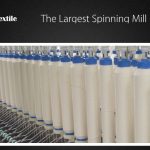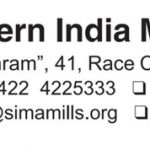In spite of modernisation and rapid technological development in the field of ring spinning, the mechanism ring-traveller spindle has remained almost the same until now. Furthermore, ring spinning remains the dominant spinning technology even today. The producers of modern spinning frames have been developing the machines with improved construction of different working elements and optimal spinning geometry, with a ring diameter of 36 mm, a tube length of 180 mm and spindle speed of up to 25,000 min-1.All serving and transport functions have already been automated. A high linking level of spinning and winding, and even of the winding and twisting technological processes, has been achieved using the elements of computer-assisted automation and control. Besides the conventional functions (spindle speed, delivery speed, productivity, twist, draft, machine efficiency), computer-based systems control and enable the optimisation of spinning conditions (formation of bobbins, position of ring rail, automated doffing and setting of empty tubes, cleaning and oiling of main machine parts). Construction improvements of different working elements of the ring-spinning frame and optimised spinning geometry of the continuous form of fibres (roving or sliver) enable increased productivity, better yarn quality, as well as flexibility and profitability of the process.
All these optimisations and improvements of the ring spinning frame, however, have not enabled the reduction of the spinning triangle, which can be defined as the most problematic and weakest spot in the yarn formation process using the ring-traveller system. The spinning triangle that occurs while the yarn is formed is the cause of many fibres leaving the drafted roving, or being partly spun into the yarn with one end only. This causes greater waste of fibres, lower exploitation of fibre tenacity in yarn, poorer appearance and greater hairiness of the spun yarn. The newest research in the field of ring spinning has shown that modification of a three-cylinder drafting equipment with tow aprons in a region after front drafting rollers enables ring spinning to proceed with a minimised spinning triangle, or even without it at all. This modified process is called compact or condensed spinning.
Conventional Versus Compact Ring Spinning Technology : The twist that is transmitted to the yarn in the ring spinning process originates along the curve between the traveller and front drafting rollers. Transmission of twists is opposite to the yarn movement in this area. The traveller transmits twists to already drafted fibres as close as possible to the clamping point after the front rollers. However, the twists never reach the clamping point, because after leaving the front rollers the fibres tend to direct towards yarn axis. The different length of the path of the inner and outer fibres that form the yarn cause a so-called spinning triangle in ring spinning. The length of the spinning triangle depends on spinning geometry and twisting intensity. The form and dimensions of the spinning triangle significantly influence the structure, surface characteristics, physical and mechanical characteristics of spun yarn. Not all fibres that are placed at the external edges of the triangle can be spun into the yarn structure, and can leave the drafting equipment without having been spun into the yarn. Such fibres also increase yarn hairiness.
The gradual transmission of twists with the traveller along the yarn balloon causes a certain tension in the fibre bundle that forms the spinning triangle, a tension which is not distributed symmetrically in the yarn cross section. It is greatest in fibres that are positioned at the edges of the spinning triangle, and smallest in fibres lying in the middle of the triangle. This asymmetric distribution is the reason for fibre breakage according to their position in the spinning triangle during subsequent processing. Furthermore, the fibres gradually take over the external axial yarn loading; therefore, they also break one after another. The consequence is lower yarn strength and poorer utilisation of the fibre tenacity (35 to 50%).





